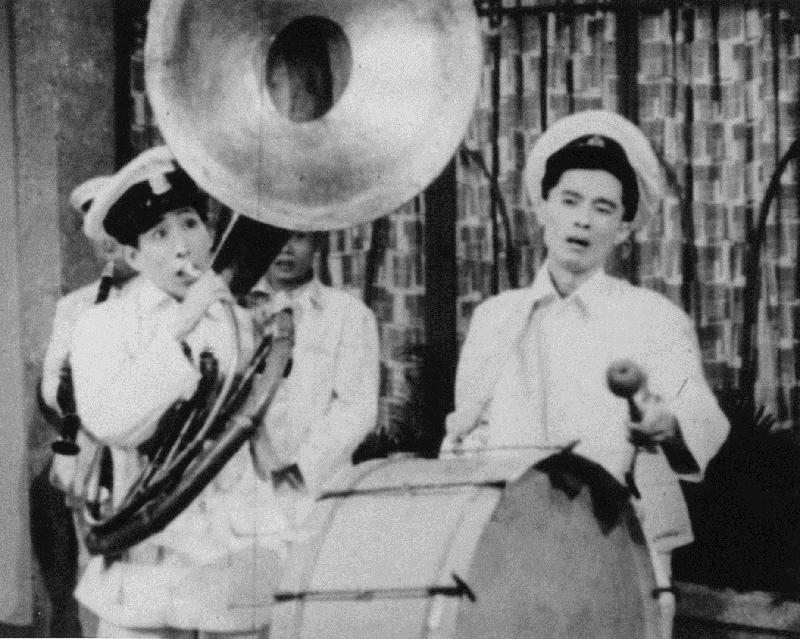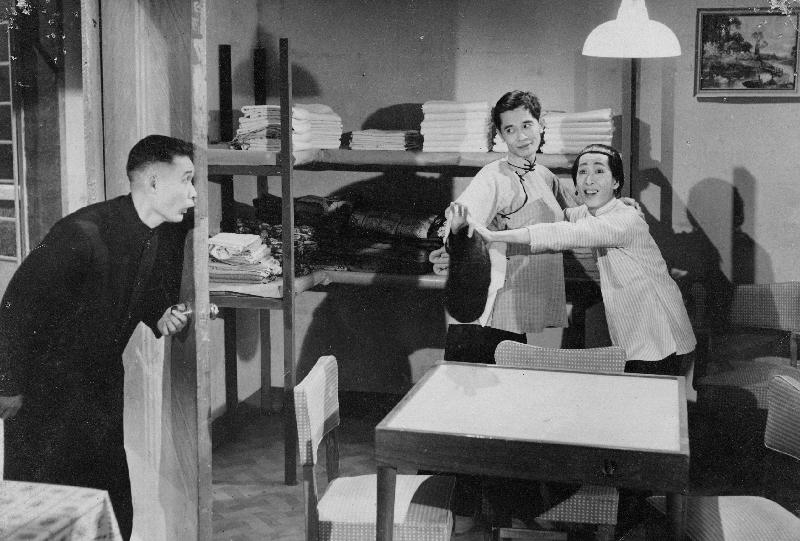LCQ6: Hot weather
Following is a question by the Hon Elizabeth Quat and a reply by the Secretary for the Environment, Mr Wong Kam-sing, in the Legislative Council today (June 6):
Question:
The Hong Kong Observatory recorded a highest temperature of 34.7 degrees Celsius in the urban areas on 21st of last month. On that day, that temperature reading broke the highest temperature record of this year, was the highest temperature on record for the month of May in 42 years, and marked the third hottest day in May since records began in 1884. Some members of the public have pointed out that hot weather has brought considerable impacts on the daily lives and health of the grass roots and outdoor workers. In this connection, will the Government inform this Council:
(1) of the number of reports received by the authorities in the past five years about employees suffering from heat strokes while working outdoors; whether the authorities will review the guidelines and legislation relating to employees at work under hot weather, with a view to better safeguarding the health of employees working in a hot environment;
(2) of the average number of persons each night who sought shelter at the various temporary night heat shelters (TNHSs) operated by the Home Affairs Department during the days of last month when they were open; whether the authorities have considered setting up more TNHSs and ensured that there is at least one TNHS in each District Council district; if so, of the specific plan; if not, the reasons for that; whether the authorities will install additional water dispensers in various districts throughout the territory so that members of the public can replace fluid lost in time to avoid heat strokes caused by dehydration; if so, of the details; if not, the reasons for that; and
(3) as quite a number of members of the grass roots (including families residing in sub-divisions of flat units (commonly known as sub-divided units) have relayed that they need to turn on air-conditioners or fans under hot weather to beat the heat, but the relevant expenditure on electricity charges places a heavy burden on them, whether the authorities will consider introducing afresh an electricity charges subsidy to alleviate the financial pressure on the grass roots; whether the authorities will, by making reference to the experience and practices of overseas countries, take measures to cool down the city, such as increasing urban greening features and green roofs, adopting more green building designs, promoting a greater use of building materials that enable green cooling, providing water mist systems at passenger waiting areas, increasing urban water bodies, encouraging members of the public to save energy in their daily lives and lead a green lifestyle, so as to mitigate the urban heat island effect; if so, of the specific plan; if not, the reasons for that?
Reply:
President,
Having consolidated the information provided by relevant bureaux and departments, I would like to reply on behalf of the Government as follows:
(1) The numbers of heat stroke related work injury cases registered at the Labour Department (LD) in the past five years are provided at Annex.
LD is highly concerned about the hazard of heat stroke to employees working under hot weather. In addition to strengthening inspections and enforcement, LD raises the awareness of employers and employees on heat stroke prevention by publicity and education. LD has produced two pamphlets, entitled Prevention of Heat Stroke at Work in a Hot Environment and Risk Assessment for the Prevention of Heat Stroke at Work, to provide guidance to employers on assessing the risk of heat stroke at workplace and assist them in taking suitable preventive measures. Besides, LD has produced heat stress assessment checklists specifically for the construction and outdoor cleansing industries.
LD also assists the Construction Industry Council in formulating and reviewing their guidelines on preventing heat stroke of construction workers. In 2013, the Construction Industry Council updated the guidelines, recommending the industry to provide an additional 15-minute rest break to construction workers in the morning every day from May to September every year. LD will continue to pay close attention to the guidelines on working in hot environment. It will also strengthen inspections and enforcement, and conduct reviews when necessary to ensure the occupational safety and health of employees.
(2) The Home Affairs Department (HAD) has designated 15 Community Halls or Community Centres as temporary night heat shelters (shelters) for people to take refuge from very hot weather from 10.30pm to 8am the next day.
For the month of May 2018, the shelters were open from 18 to 31 May with a total of 2 409 people (man times) registered for using the service, i.e. 172 people per night on average, which is similar to that in recent years. The number of shelters has increased from 9 to 15 in the past decade. HAD will keep in view the locations and number of the shelters from time to time to meet public needs. Our target is that shelters will be set up in each of the 18 districts shortly. We would explore if it is possible to identify suitable locations for such purpose in the districts concerned.
There are a total of over 10 000 water dispensers at government premises, of which about 2 700 mainly serve the general public. These water dispensers are mostly installed at the active leisure facilities managed by the Leisure and Cultural Services Department, such as sports centres, sports grounds and swimming pools. To create a social atmosphere that encourages the public to bring their own water bottles as a habit that will help reduce plastic bottles at source, the Environmental Protection Department is coordinating with various bureaux and departments to, depending on needs, install water dispensers at new government premises and suitable existing government premises during renovation where it is physically and technically feasible.
(3) Under the post-2018 Scheme of Control Agreements signed between the Government and the two power companies, the power companies will reserve funding under their Community Energy Saving Funds to assist disadvantaged groups, including tenants of subdivided units. The power companies will announce details in due course.
Apart from this, the Government promulgated the Energy Saving Plan for Hong Kong’s Built Environment 2015~2025+ in 2015, which sets a target of reducing Hong Kong’s energy intensity by 40 per cent by 2025. Various measures have been rolled out (Note 1).
To mitigate the heat island effect, the Government is embarking on a tiered strategy to tackle the issue at the territorial, building and facility levels. At the territory level, the Government is implementing the Greening Master Plans (GMPs) to create coherence with the existing plants of the respective districts and thus improve our living environment. The formulation of New Territories GMPs followed after completion of the Urban GMPs in 2011.
An urban forest helps alleviate extreme air temperature, improve air quality, and provide shade. The Government endeavours to integrate quality landscape and planting provisions into public works projects. This includes the allocation of sufficient space for roadside planting, requirement to achieve site coverage of greenery of 20 to 30 per cent for site areas that exceed 1 000 square metres, and planting on the roof level of suitable existing structures, etc.. In the past 10 years, the Government has planted approximately 71.7 million new plants in projects outside country parks.
To improve urban climate and respond to climate change, we are incorporating urban micro-climatic and air ventilation considerations in planning and urban design.
The District Cooling System (DCS) in the Kai Tak Development is in operation. The Government will also consider the provision of DCS in other new development areas or redevelopment areas. Buildings connecting to a DCS will not need to install heat rejection units and chillers for their air-conditioning systems.
When planning new drainage provision, the Government will seize every opportunity to incorporate the elements of Blue-Green Infrastructure, including the provision of water bodies (such as construction of flood attenuation lake). These provisions can alleviate the heat island effect as well.
As regards buildings, the Buildings Department has introduced a new mechanism to promote the construction of environmentally friendly and sustainable private buildings (Note 2) by imposing an overall cap on gross floor area (GFA) concession since 2011 with a view to achieving better air ventilation, enhancing the environmental quality of our living space particularly at the pedestrian level, providing more greenery, and mitigating the heat island effect. Another pre-requisite is registration of the project under BEAM Plus, which encourages buildings to include green spaces and the use of good ventilation design to help mitigate the heat island effect.
The GFA concession mechanism also encourages the provision of an appropriate level of green and amenity features in buildings, such as sunshades, that would improve the quality of living space and enhance the environmental performance of building developments.
The Government has been leading by example in promoting sustainable buildings, including introducing green design in government buildings. From 2012 to 2017, the Government has completed 192 green roof projects and approximately 40 projects are under construction.
Franchised bus companies have been paying attention to the passengers waiting environment, including improving the design of bus shelters to mitigate the heat of the waiting areas. The Government also conducts regular inspections and maintenance on the ventilation systems of covered public transport interchanges under our management so that passengers can wait in a comfortable environment. We have no plan to provide water mist systems at passenger waiting areas at the moment.
Finally, the Government announced Hong Kong’s Climate Action Plan 2030+ in 2017 which sets the carbon reduction target for 2030 and the key measures to combat climate change. Some of the measures on adaptation and resilience, such as incorporating urban climatic and air ventilation considerations in planning and urban design, can help mitigate the urban heat island effect.
Thank you, President.
Note 1: including setting an electricity saving target for government buildings and implementation of energy saving projects; continuing with implementation of the Mandatory Energy Efficiency Labelling Scheme; championing the Energy Saving for All campaign; and reviewing and tightening the Overall Thermal Transfer Value for commercial buildings and hotels and the Residential Thermal Transfer Value standard for domestic buildings, etc..
Note 2: under the mechanism, the pre-requisites for granting GFA concessions include compliance with the sustainable building design elements including building setback, building separation and site coverage of greenery. read more




